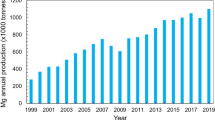Abstract
The effect of an applied tensile stress on the hydrides morphology in ZIRCALOY-4 was studied. To this end, the residual stresses around the hydride caused by the hydride precipitation was first evaluated. Considering the disability to predict hydride transformation stresses by ordinary macroscopical mechanical calculation in previous studies, X-ray diffraction (XRD) profile analysis and transmission electron microscopy (TEM) observations were carried out to quantify the microstructural evolution in hydrided ZIRCALOY-4. The residual microstrains and microstresses in the matrix and around the hydride were thus estimated. The big discrepancy between our results and the existing studies were explained by the major self-accomodation of phase transformation deformation remaining inside the hydrides and the local plastic accommodation of ZIRCALOY-4. In order to study the stress effect on hydride orientation and to estimate the hydride orientation threshold stresses, hydrogen was introduced into the specimens under tensile stress. A quantitative technique was used to evaluate the susceptibility to perpendicular hydride formation under the influence of texture, residual stresses, and externally applied tensile stresses, following an improved approach that had been first developed by Sauthoff and then applied to Zr-H system by Puls. Both analytical and experimental results indicate that the threshold stress for producing perpendicular hydrides varies with the microstructural features, the yield strength, and the residual stresses.
Similar content being viewed by others
References
J.B. Bai: Ph.D. Thesis, Ecole Centrale Paris, Paris, 1991.
J.B. Bai, C. Prioul, and D. François:Metall. Mater. Trans. A, 1994, vol. 25A, pp. 1185–97.
C.J. Simpson, O.A. Kupcis, and D.V. Leemans: ASTM STP 633, 1977, pp. 630-42.
P.H. Davies and C.P. Steams: ASTM STP 905, 1986, pp. 379-400.
I. Aitchison: ASTM STP 458, {dy1969}, pp. 160-78.
J.J. Kearns and C.R. Woods:J. Nucl. Mater., 1966, vol. 20, pp. 241–61.
M.P. Puls: inSolute-Defect Interaction, S. Saimoto, G.R. Purdy, and G.V. Kidson, eds., Pergamon Press, New York, NY, 1986, pp. 426–33.
J.B. Bai, C. Prioul, J. Pelchat, and F. Barcelo:Proc. Int. Conf. ANS/ENS, Avignon, France, April 21–24, 1991, pp. 223–37.
J.B. Bai, C. Prioul, and D. François:Proc. 6th Int. Conf. on Materials (ICM-6), Kyoto, Japan, July 28–August 2, {dy1991}, pp. 731-36.
M. Leger and A. Donner:Can. Metall. Q., 1985, vol. 24, pp. 235–43.
J.B. Bai, C. Prioul, and D. Fançois:J. Adv. Sci., 1991, vol. 3, pp. 188–200.
J.B. Bai, N. Ji, D. Gilbon, and J. L. Lebrun:Scripta Metall., 1992, vol. 26, pp. 369–74.
N. Ji and J.L. Lebrun:J. Mater. Sci. Lett., 1989, vol. 8, pp. 1127–30.
C.E. Ells:J. Nucl. Mater., 1968, vol. 28, pp. 129–51.
J.S. Bradbrook, G.W. Lorimer, and N. Ridley:J. Nucl. Mater., 1972, vol. 42, pp. 142–60.
A. Akhtar:J. Nucl. Mater., 1977, vol. 64, pp. 86–92.
G.J.C. Carpenter:J. Nucl. Mater., 1973, vol. 48, pp. 264–66.
T. Mori and K. Tanaka:ActaMetall., 1973, vol. 21, pp. 571–74.
B.W. Leiten and M.P. Puls:Metall. Trans. A, pp. 797-806.
J.B. Bai:J. Mater. Sci. Lett., 1993, vol. 12, pp. 677–80.
S.R. MacEwen, N. Christodoulou, and A. Salinas-Rodriguez:Metall. Trans. A, 1990, vol. 21A, pp. 1083–95.
V. Perovic, G.C. Weatherly, and C.J. Simpson:Acta. Metall., 1983, vol. 31, pp. 1381–91.
C.E. Ells:J. Nucl. Mater., 1970, vol. 35, pp. 306–15.
G. Sauthoff: Z.Metallkd., 1975, vol. 66, pp. 106–09.
G. Sauthoff: Z.Metallkd., 1976, vol. 67, pp. 25–29.
G. Sauthoff: Z.Metallkd., 1977, vol. 68, pp. 500–05.
Y. Takao, T.W. Chou, and M. Taya:Trans. ASME, 1982, vol. 49, pp. 536–46.
M.P. Puls:Hydrogen-Induced Delayed Cracking: Part 2. Effect of Stress on Nucleation, Growth and Coarsening of Zirconium Hydride Precipitates, AECL-8381, Atomic Energy of Canada Limited Report, Whiteshell Nuclear Research Establishment, 1984.
M.P. Puls:Hydrogen-Induced Delayed Cracking: Part I. Strain Energy Effects on Hydrogen Solubility, AECL-6302, Atomic Energy of Canada Limited Report, Whiteshell Nuclear research Establishment, 1978.
Author information
Authors and Affiliations
Rights and permissions
About this article
Cite this article
Bai, J.B., JI, N., Gilbon, D. et al. Hydride embrittlement in ZIRCALOY-4 plate: Part II. interaction between the tensile stress and the hydride morphology. Metall Mater Trans A 25, 1199–1208 (1994). https://doi.org/10.1007/BF02652294
Received:
Issue Date:
DOI: https://doi.org/10.1007/BF02652294




